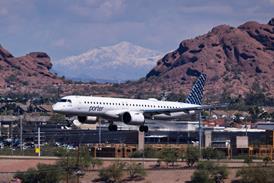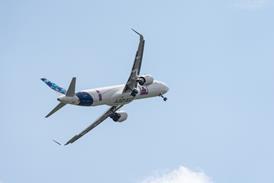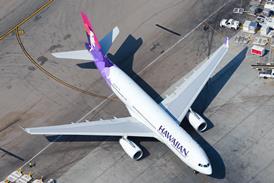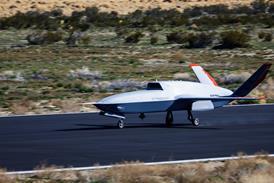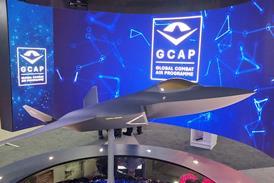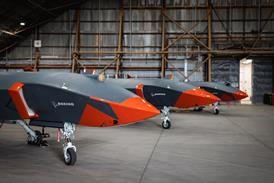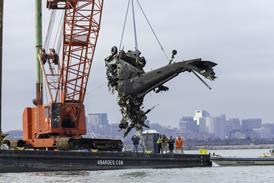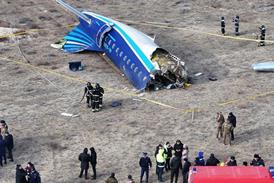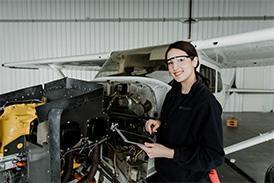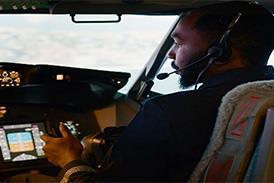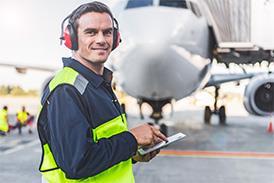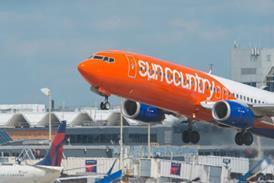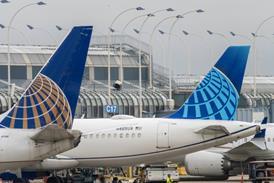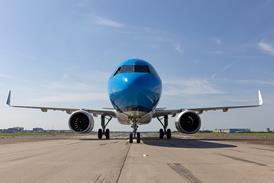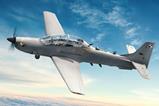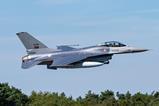Embraer believes its KC-390 is well positioned to enter the US Air Force’s (USAF’s) future inventory in a proposed “Agile Tanker” guise, despite walking away from a partnership with a US-based potential prime.
Working with L3Harris, the Brazilian airframer conducted studies into a version of the twinjet airlifter optimised for USAF use, before their relationship ended towards the end of last year.
A central component of their work was to explore the feasibility of installing a lightweight in-flight refuelling boom beneath the aircraft’s rear cargo ramp. Early in 2024, the pair responded to a request for information (RFI) from the USAF related to tanker technologies.
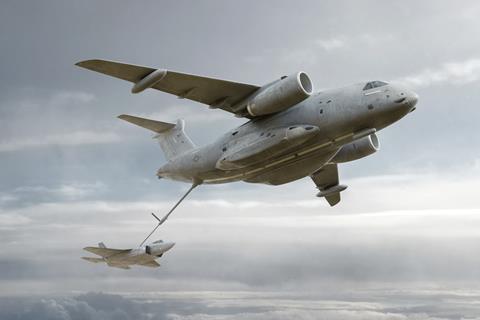
Embraer Defense & Security chief commercial officer Frederico Lemos puts the parting of ways down to “different priorities” between the companies, and notes: “Maybe Embraer wants to move faster.”
While the airframer is no longer pursuing the Agile Tanker concept with L3Harris, he notes: “We maintain a very good relationship with them.
“We are looking at what could be the right partnership for the boom, which is very important for success in the US,” Lemos told journalists at Embraer’s office in Lisbon, Portugal on 25 March. The company’s preference would be for such an installation to not compromise the KC-390’s core capability as a transport, he adds.
Asked whether Embraer would look to partner with a prime contractor or lead its own bid, Lemos notes that the KC-390 already features high enough US content to meet Buy American Act requirements – including its International Aero Engines V2500 turbofans and avionics – and that this would rise to around 70% with the addition of local assembly.
“We are assessing that,” he tells FlightGlobal. “We have very good discussions with companies in the US. But again, we need to understand the path going forward towards this capability.
“If needed, we can set up a production line in the US,” he says. While Embraer already has a production presence for business jets in Melbourne, Florida, he notes that the choice of a future location would depend on factors such as the potential support available from individual states keen to host such work.
“We have a really good relationship with the US industrial base. We have started discussions with different companies to look at the mission systems that are programmes of record that we might need to adjust to meet the very specific interoperability and capabilities of the US Air Force and other services.
“We want to grow and invest in the US, and we see the KC-390 as a great opportunity to do that. It’s not only the number of booms and [refuelling] baskets that you have in the air that creates resilience for your operations,” he notes. “The KC-390 offers more capability.”
In addition to its application as a refueller capable of operating from austere operating bases for the USAF, the KC-390 has already demonstrated its potential as a strike weapons carrier.
During a demonstration conducted at Ramstein air base in Germany last year involving a Portuguese air force aircraft, a HIMARS surface-to-surface missile launch vehicle was fully loaded onto the transport in only 17min. Under a so-called “shoot and scoot” operating concept, a tactical transport aircraft could land at a remote site and rapidly unload such a system, before swiftly recovering it after launching its missiles and taking off, reducing the risk of forward-deployed equipment being spotted and then struck on the ground.
A Brazilian air force KC-390 also took part in the USAF-hosted Exercise Storm Flag for the first time last year. Its participation including conducting operations from a semi-prepared landing strip near Alexandria, Louisiana.
In late March, a Brazilian navy Avibras ASTROS II vehicle carrying two MANSUP anti-ship missiles was loaded into one of the nation’s KC-390s. The system’s total weight of 24t is 2t below the transport’s maximum cargo capacity.
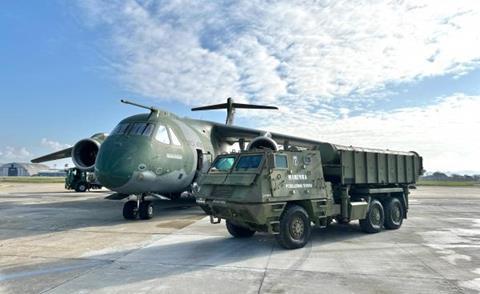
“The transport of ASTROS by the KC-390 ensures that Brazil can quickly reposition its firepower to any region of the country, reinforcing its defence and deterrence capabilities,” the air force says, describing such a task as to take no more than 24h.
Embraer – which has been targeting a potential USAF need for 120-140 “Bridge Tankers” – notes that its proposed development also could be employed in support of a future class of uncrewed systems being pursued via the service’s Collaborative Combat Aircraft programme.
“The operational challenge is now. The KC-390 is here,” Lemos says. “We want to be there, and are making all efforts to be ready.
“We see that the KC-390 can operate from many more bases in the Pacific than any other [tanker] aircraft,” he claims. “It is capable, effective and available now.
“We don’t know what’s going to happen with NGAS, but the tanking needs are still there,” Lemos says, referring to the USAF’s Next Generation Air-refuelling System requirement. “100%, if there was another RFI coming forward, we will respond.”
The service has yet to define its plans, but appears to have backed away from a Bridge Tanker acquisition and the development of a dedicated low-observable platform to be capable of penetrating hostile airspace.
Speaking before the House Armed Services Committee on 26 March, US Transportation Command commander General Randall Reed noted: “We welcome the service-led recapitalisation plans for the air refuelling fleet, which must continue uninterrupted into the future.
“Even after the air force accepts the final contracted [Boeing] KC-46, the average age of the remaining [Boeing] KC-135 fleet will be 67 years old,” he notes. The USAF has to date received around half of its planned 179 767-based KC-46A Pegasus tankers.
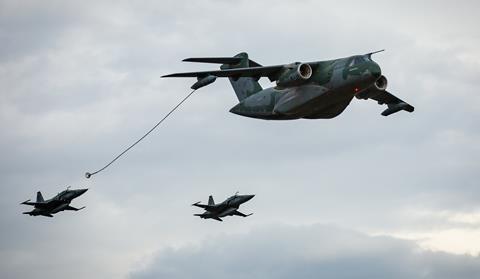
Beyond the USAF’s needs, Lemos notes that the US Navy and Marine Corps also require increased refuelling support. “They need this sort of flexibility for their operations. The need for tanking is only growing.”
Embraer will promote the KC-390 to the US services at the ARSAG (Aerial Refueling Systems Advisory Group) 2025 conference in Las Vegas, Nevada from 29 April-1 May.
Meanwhile, Lemos says “there is a lot of interest from the US in aerial firefighters”, as operators look to modernise their aged fleets. The KC-390 can be equipped with the MAFFS II system as a temporary modification, with the Brazilian air force – which employed the capability to help fight forest fires in August 2024 – recently having ordered a second kit.
“It is a tough operation for the aircraft – low-level, high-speed – with good use of the fly-by-wire [system] for the pilots,” Lemos notes.
Airframer ramping-up production as global interest soars
With eight customers already under contract and another two in the wings, Embraer is confident of furthering its orders success with the KC-390 this year.
The airframer is now working towards finalising deals with Slovakia and Sweden, which both selected the twinjet airlifter in late 2024. Bratislava wants to acquire three examples, while Stockholm has not disclosed the size of its potential order.
“There is more to come this year. We are very confident in that,” says Embraer Defense & Security chief commercial officer Frederico Lemos. He attributes strong demand for the aircraft to “tense moments all around the world”, while “the fast adoption of the KC-390 has raised interest from nations that were not so aware”.
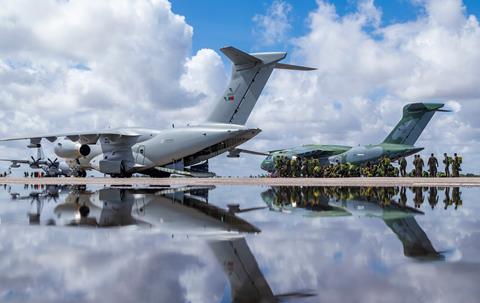
Embraer has to date delivered 10 of the tactical transport and tanker aircraft, to launch customer Brazil (7), and export buyers Hungary (1) and Portugal (2).
“We are ramping up production, because we have a good backlog,” Lemos says. “We will be delivering to Brazil, to Portugal, the second to Hungary, and perhaps new customers will have their first airplane this year.”
The Czech Republic signed for two of the airlifters last October, and indicated that it was expecting to receive the lead example before the end of 2025.
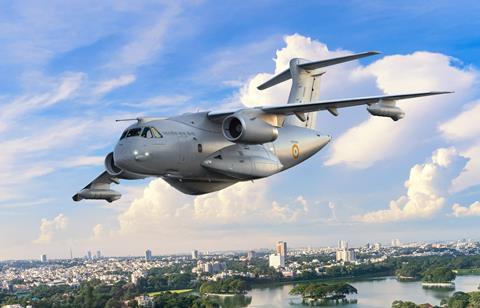
The airframer is extensively promoting the KC-390 in Europe, the Middle East and the Asia-Pacific region, while also eyeing potential needs in the USA and Africa. It also will be showcasing the jet at the LAAD show in Rio de Janeiro from 1-4 April, as it eyes possible prospects with other Latin American air forces.
The company’s confirmed order book to date includes 42 aircraft, for Austria (4), Brazil (19), the Czech Republic (2), Hungary (2), the Netherlands (5), Portugal (5), South Korea (3) and an undisclosed customer (2).


